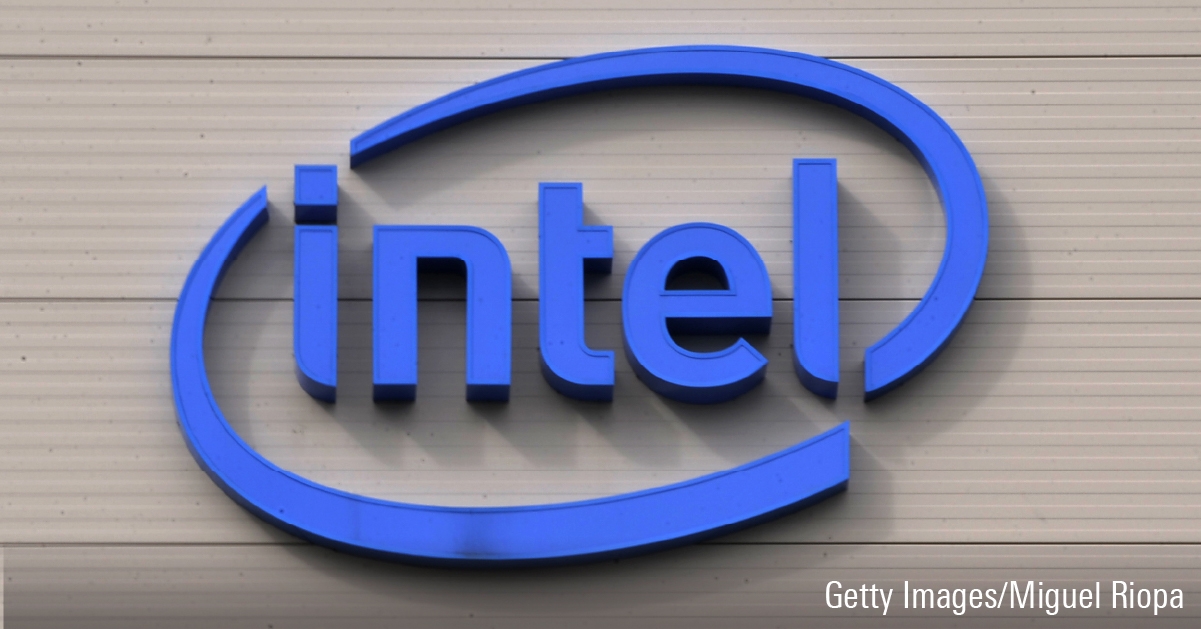Is Intel Stock a Buy After Awful Results?
The stock is undervalued but the company’s 2023 forecast is bleak.

Intel INTC is the market share leader in the integrated design and manufacture of microprocessors found in PCs and servers. Historically, the company supplied the most powerful central processing units, though it has had numerous missteps in recent years. The data centers used to facilitate information being stored, analyzed, and accessed by various front-end devices are mostly run with Intel server chips. As cloud computing continues to garner significant investment, Intel’s data center group has been an indirect beneficiary. Mobile devices are the preferred device to perform computing tasks and access data via cloud infrastructures that require large-scale server buildouts. This development has provided strong tailwinds for Intel’s lucrative server processor business over the past decade. However, given manufacturing issues, we believe Intel will lose data center market share in the coming years as a result of intense competition from Advanced Micro Devices AMD and customers designing their own CPUs.
Key Morningstar Metrics for Intel
- Fair Value Estimate: $35
- Star Rating: 4 Stars
- Economic Moat Rating: Narrow
- Moat Trend Rating: Negative
Economic Moat Rating
We still believe Intel possesses cost advantages realized in the design and manufacture of its cutting-edge microprocessors and intangible assets related to its x86 instruction set architecture license and chip design expertise. However, we believe its cost advantages have eroded, as the company faced significant product delays associated with its various 10-nanometer process technologies. Rival AMD and its foundry partner, Taiwan Semiconductor Manufacturing Co. TSM, have combined to leapfrog Intel in cutting-edge processors. In turn, in recent years, Intel has lost market share, conceded on pricing, and faced a sharp decline in gross margins and returns on invested capital. We believe it is more likely than not that Intel can close the gap with TSMC/AMD and generate excess returns on capital over the next decade, but this is no longer a certainty, and we think that Intel’s manufacturing inferiority to TSMC/AMD will persist for the next year or two and perhaps longer.
Read more about Intel’s moat rating.
Fair Value Estimate for Intel Stock
Our fair value estimate is $35 per share. We expect revenue to be down 13% in 2023, primarily due to competitive pressures and a weaker macro environment. Over the next five years, we assume revenue to grow at a 6% compound annual rate, as Intel returns to top-line growth in 2024 when it begins to launch products made on a manufacturing process with extreme ultraviolet lithography. Intel’s gross margins have declined from the low 60s to the mid-40s recently. We think the biggest headwind has been data center pricing. We expect 2023 to be a near-term trough of 43% and gross margins to remain in the high 40s or low 50s for a few years. We think the company can drive operating leverage with more-focused research and development spending toward the data center and AI end markets, leading to operating margins returning to the mid-20s over time.
Read more about Intel’s fair value estimate.
Risk and Uncertainty
The cyclical industry in which Intel operates could cause its profitability to fluctuate regardless of how successful the company is in tailoring its chips to new markets. The threats posed by AMD in x86 CPUs, ARM-based CPUs developed by Intel’s customers, Nvidia’s NVDA first-mover advantage in AI, and Intel’s recent manufacturing struggles with its 10-nanometer process collectively underpin our outlook.
Read more about Intel’s risk and uncertainty.
Intel Bulls Say
- Intel is one of the largest chip companies in the world and holds the lion’s share of the PC and server processor markets. The company has maintained its position at the forefront of technology by investing heavily in R&D, and this trend should continue.
- Intel has made a string of savvy acquisitions to build its AI and automotive offerings, including Altera, Mobileye, Habana Labs, and Movidius.
- The data center group has indirectly benefited from the proliferation of mobile devices. Server processor sales will be the main driver of growth in the near future.
Intel Bears Say
- Intel is facing significant manufacturing delays and must maintain its process technology competitiveness to prevent market share loss to AMD.
- The inability of Intel to break into the smartphone market at a reasonable level is cause for concern, as mobile devices continue to proliferate at the expense of PCs.
- The rise of alternative solutions in the data center is cause for concern, with Nvidia’s graphics processing units being leveraged to accelerate server workloads.
Remove the guesswork and make informed decisions faster. Morningstar Investor’s stock ratings, analysis, and insights are all backed by our transparent, meticulous methodology. Learn more and start a seven-day free trial today.
The author or authors do not own shares in any securities mentioned in this article. Find out about Morningstar’s editorial policies.

/s3.amazonaws.com/arc-authors/morningstar/426795a6-50a8-4320-8dea-8c93d2bfd246.jpg)
/cloudfront-us-east-1.images.arcpublishing.com/morningstar/347BSP2KJNBCLKVD7DGXSFLDLU.jpg)
/cloudfront-us-east-1.images.arcpublishing.com/morningstar/TP6GAISC4JE65KVOI3YEE34HGU.jpg)
/d10o6nnig0wrdw.cloudfront.net/04-29-2024/t_d0e8253d77de4af9ae68caf7e502e1bf_name_file_960x540_1600_v4_.jpg)
:quality(80)/s3.amazonaws.com/arc-authors/morningstar/426795a6-50a8-4320-8dea-8c93d2bfd246.jpg)